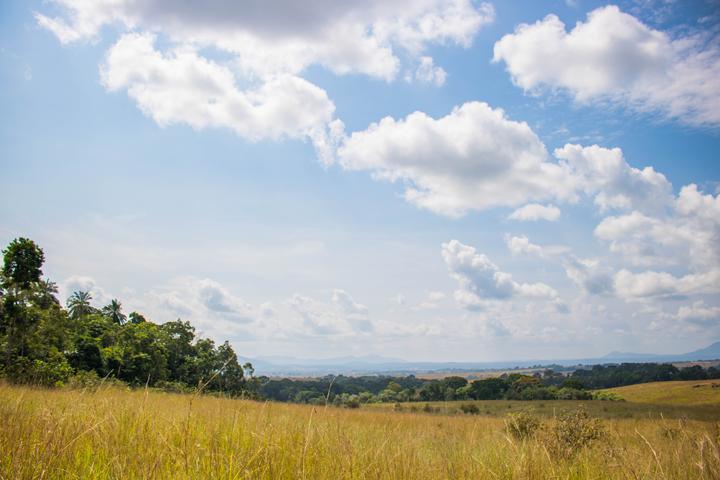Grass Species Flammability, Not Biomass, Drives Changes in Fire Behavior at Tropical Forest-Savanna Transitions
 Savanna-rainforest mosaic at a study site, Gabon
Savanna-rainforest mosaic at a study site, GabonAbstract
Forest-savanna mosaics are maintained by fire-mediated positive feedbacks; whereby forest is fire suppressive and savanna is fire promoting. Forest-savanna transitions therefore represent the interface of opposing fire regimes. Within the transition there is a threshold point at which tree canopy cover becomes sufficiently dense to shade out grasses and thus suppress fire. Prior to reaching this threshold, changes in fire behavior may already be occurring within the savanna. Such changes are neither empirically described nor their drivers understood. Fire behavior is largely driven by fuel flammability. Flammability can vary significantly between grass species and grass species composition can change near forest-savanna transitions. This study measured fire behavior changes at eighteen forest-savanna transition sites in a vegetation mosaic in Lopé National Park in Gabon, central Africa. The extent to which these changes could be attributed to changes in grass flammability was determined using species-specific flammability traits. Results showed simultaneous suppression of fire and grass biomass when tree canopy leaf area index (LAI) reached a value of 3, indicating that a fire suppression threshold existed within the forest-savanna transition. Fires became less intense and less hot prior to reaching this fire suppression threshold. These changes were associated with higher LAI values, which induced a change in the grass community, from one dominated by the highly flammable Anadelphia afzeliana to one dominated by the less flammable Hyparrhenia diplandra. Changes in fire behavior were not associated with changes in total grass biomass. This study demonstrated not only the presence of a fire suppression threshold but the mechanism of its action. Grass composition mediated fire-behavior within the savanna prior to reaching the suppression threshold, and grass species composition was mediated by tree canopy cover which was in turn mediated by fire-behavior. These findings highlight how biotic and abiotic controls interact and amplify each other in this mosaicked landscape to facilitate forest and savanna co-existence.